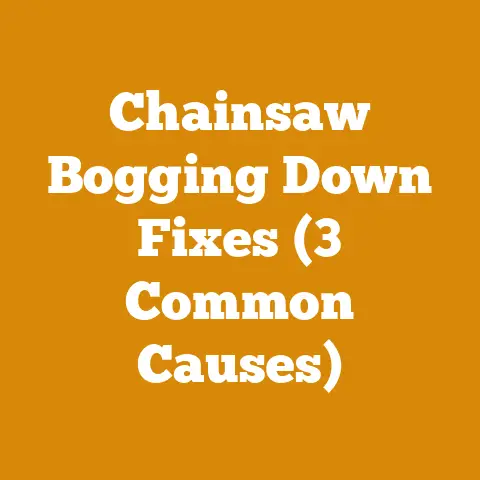Land Clearing Price Per Acre (3 Factors to Consider)
Textures of Land Clearing
When embarking on a land clearing project, the textures you encounter are as diverse as the land itself.
Each step through overgrown fields or dense forests tells a story.
The crunching leaves underfoot whisper secrets of seasons past, while moss-covered stones stand as ancient guardians of the land.
It’s not just about clearing; it’s about feeling and understanding the earth beneath you.
Now, if you’re considering transforming a piece of land, there are plenty of things to keep in mind.
Let’s explore these in great detail!
3 Key Factors to Consider for Land Clearing Price Per Acre
1. Type of Vegetation
Vegetation is a major player in determining land clearing costs. Let’s break it down.
Light Vegetation
If you’re dealing with light vegetation, such as grasslands or sparse bushes, you’re in a relatively easy situation.
Think of it like mowing the lawn on a grand scale.
Imagine walking through fields where the tallest obstacles are daisies swaying in the breeze.
While this might seem simple, it still requires effort and attention to detail.
Tip:
Using a brush mower can significantly ease this process, allowing for efficient clearing.
Moderate Vegetation
Moderate vegetation is like tackling a backyard that’s been ignored for years.
Small trees and thick bushes present more of a challenge.
I once faced a field that seemed innocent at first glance but hid a jungle of thorns and saplings demanding respect and patience.
Personal Insight:
During one project, I underestimated the density of vegetation.
What I thought was a day’s work turned into a three-day endeavor.
Lesson learned: always assess thoroughly!
Heavy Vegetation
This is where the big guns come in.
Dense forests and large trees require heavy-duty machinery like chainsaws and bulldozers.
Imagine standing at the edge of a forest, the towering trees casting long shadows, and knowing it’s your task to clear them.
It’s both daunting and exhilarating.
Safety Callout:
Ensure all operators are trained and wear appropriate safety gear when handling heavy machinery.
2. Terrain Characteristics
The terrain is another crucial factor. Let’s dig deeper into how it affects costs.
Flat Terrain
Clearing flat terrain is generally more straightforward.
The lack of elevation means machinery can operate efficiently without the risk of tipping or getting stuck.
Example:
Think of it like driving on a highway versus a winding mountain road—the former allows for steady, predictable progress.
Hilly or Rocky Terrain
Hilly or rocky terrain presents unique challenges.
Equipment must navigate uneven surfaces, which can slow progress and increase costs.
Imagine trying to clear land where every step is met with resistance—a boulder here, a steep incline there.
Warning:
Always assess the terrain before beginning.
Hidden obstacles can pose serious risks to both equipment and personnel.
Story from the Field:
In one memorable clearing job, we encountered a hillside littered with ancient rocks.
Each had to be carefully maneuvered around, adding days to our timeline.
3. Accessibility and Location
The accessibility of your land dramatically impacts costs. Let’s dissect this further.
Easy Access
If your land is easily accessible, consider yourself lucky!
Proximity to roads or clear pathways means machinery can be brought in without hassle.
Benefit:
Quick access reduces transport time for equipment, saving both time and money.
Difficult Access
However, if your land is tucked away behind barriers like dense forests or lacks a proper road, costs can skyrocket.
Imagine having to create a path just to reach your clearing site—each obstacle adds time and complexity.
Question to Ponder:
Have you ever tried moving furniture through a cluttered room?
Now picture doing that with bulldozers over several acres!
Personal Story: My Land Clearing Adventure
One particular adventure stands out in my memory.
A friend inherited an acre from his grandfather—a beautiful piece of land filled with memories but completely overgrown.
We faced moderate vegetation but were surprised by an unexpected challenge: boulders scattered across the property like forgotten sentinels.
Each step felt like unraveling history, discovering tools and remnants from long ago beneath layers of earth.
The joy of uncovering those pieces made the arduous task worthwhile.
This experience taught me valuable lessons about preparation and respect for the land’s history.
Step-by-Step Guide to Preparing for Land Clearing
Here’s how you can prepare thoroughly if you’re planning a large-scale clearing project.
1. Conduct a Survey
Start by hiring a professional surveyor to map out your land.
This will help identify property lines, obstacles, and any legal considerations.
Importance:
Understanding boundaries prevents legal issues and ensures you only clear what belongs to you.
2. Determine Your Goals
What do you envision for your cleared land?
Whether it’s for agriculture, building, or simply reclaiming space, having clear goals shapes your approach.
Reflective Thought:
What do you want your land to say once it’s free of overgrowth?
3. Choose the Right Equipment
Based on your vegetation type and terrain, select appropriate tools:
- Chainsaws for cutting large trees.
- Bulldozers for dense forest areas.
- Brush mowers for lighter vegetation.
Tip:
Renting equipment can be an economical choice if you’re not planning regular clearing tasks.
4. Hire Professionals if Needed
Sometimes it’s best left to those with experience, especially for dense areas or challenging terrains.
Common Questions and Concerns
Why is land clearing so expensive?
It’s labor-intensive work requiring specialized machinery and expertise.
Each plot presents unique challenges that contribute to overall costs.
Can I clear my own land?
Yes!
However, it’s essential to have proper tools and knowledge.
For larger projects or difficult terrains, hiring professionals ensures efficiency and safety.
What permits do I need?
Local regulations vary widely; always check with local authorities before proceeding with any large-scale clearing projects.
Troubleshooting Tips and Best Practices
- Stuck Equipment? Use boards or gravel for traction when machinery gets bogged down in soft soil.
- Chainsaw Trouble? Regularly check chain tension and lubrication levels for optimal performance.
- Dealing with Stumps Consider renting stump grinders—a worthwhile investment for efficiency’s sake!
Important Reminders and Next Steps
Don’t rush this process; thoroughness ensures safety while preventing future complications like regrowth or erosion issues post-clearing.
Once cleared, establish maintenance routines to keep vegetation from reclaiming control!
FAQ Section
Q: How long does it take to clear one acre?
A: Timeframes vary based on factors such as vegetation density & terrain complexity; expect anywhere from several days up to weeks depending upon conditions encountered during project execution!
Q: Is burning an option for clearing?
A: While possible under certain circumstances (with appropriate permits), burning poses environmental concerns—always adhere strictly within legal guidelines when considering this method!
Q: What’s typical cost per acre?
A: Prices range widely—from $500-$6k+ per acre—depending largely upon aforementioned variables affecting project scope/duration/costs involved throughout entire endeavor!
With these insights into land clearing intricacies now at hand—armed w/knowledge gleaned herein—you’re better equipped than ever before tackle whatever challenges may lie ahead amidst vast landscapes awaiting transformation under careful guidance/skillful execution alike!
Always remember seek assistance if uncertain about any aspect process; better safe than sorry out there folks!






